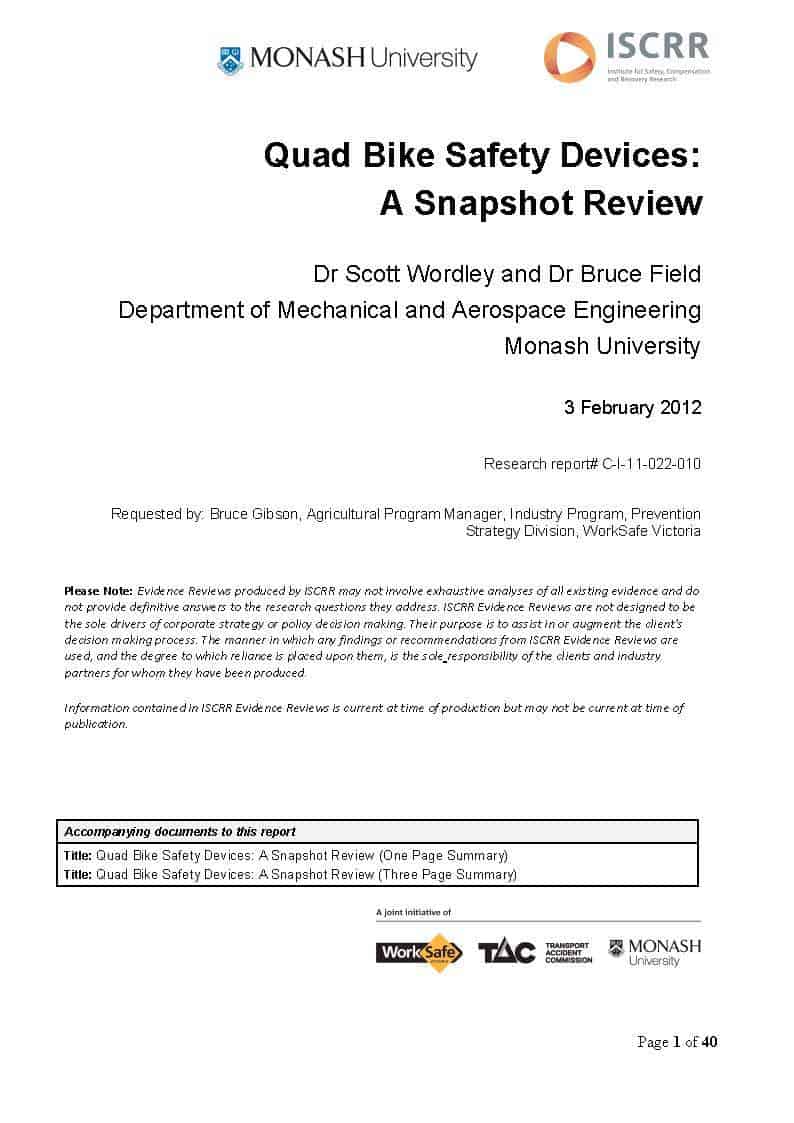 In February 2012, the Institute for Safety, Compensation and Recovery Research (ISCRR) released a research report into the efficacy of crush protection devices (CPDs) on all-terrain vehicles or, more accurately, quad-bikes. The report summary states that
In February 2012, the Institute for Safety, Compensation and Recovery Research (ISCRR) released a research report into the efficacy of crush protection devices (CPDs) on all-terrain vehicles or, more accurately, quad-bikes. The report summary states that
“Experimental tests conducted by the University of Southern Queensland indicate that the Quad Bar CPD is capable of either preventing a complete roll, or modifying the roll event to reduce the risk and severity of injury to the rider for both side roll and back flip scenarios. These results highlight the potential for CPDs such the Quad Bar to reduce rider injuries and fatalities resulting from low speed roll over incidents;”
Great news for the manufacturer of the Quad Bar. However the report is damning of some research into quad bike rollovers, particularly that which has been relied on by the quad bike manufacturers to resist the application of CPDs. Continue reading “An Australian research review blasts US quad bike research”


